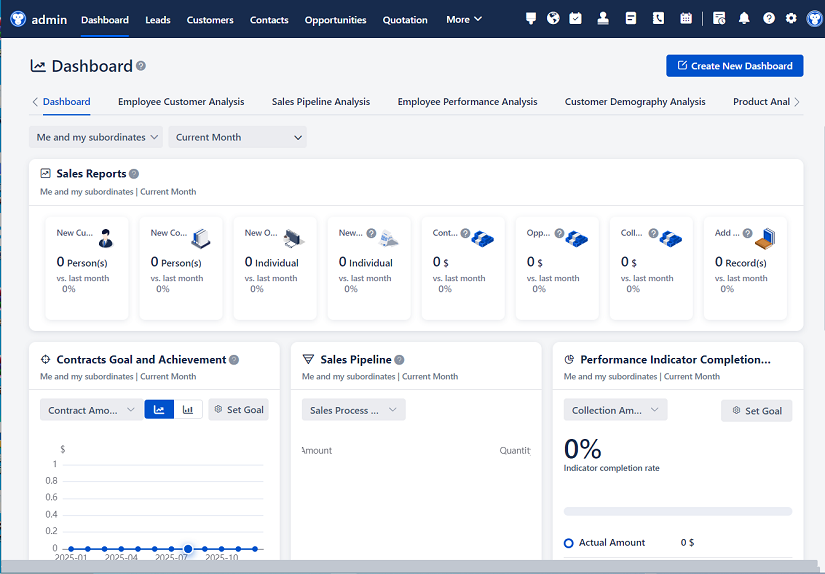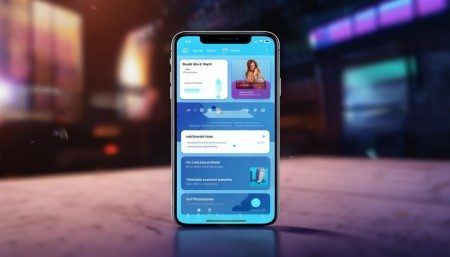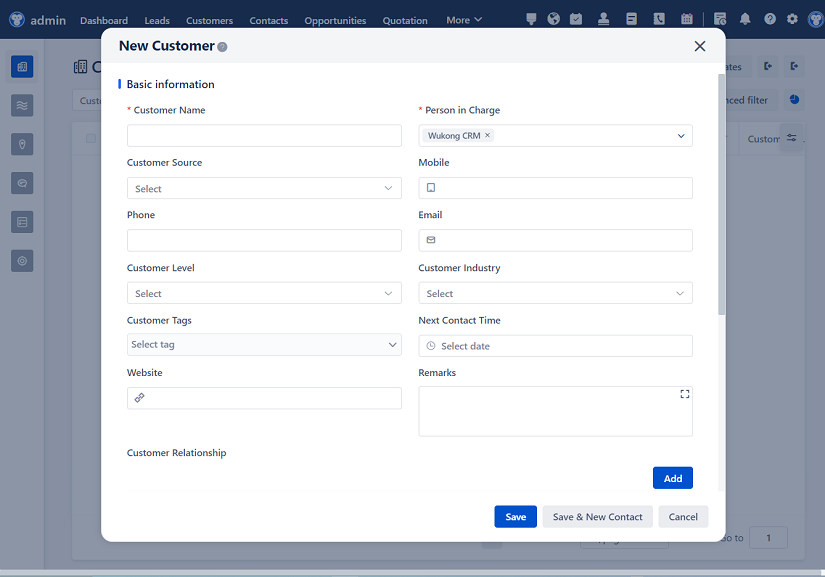
△Click on the top right corner to try Wukong CRM for free
You know, I’ve been thinking a lot lately about how businesses manage their customers these days. It’s not just about selling something and moving on anymore. People expect more—better service, faster responses, and companies that actually remember who they are. That’s where CRM systems come in. Honestly, I didn’t fully appreciate how powerful they could be until I started looking into some real-world examples.
Let me tell you about one company I came across—Salesforce, actually. Now, I know they’re kind of the poster child for CRM, but hear me out. They didn’t just build a product; they transformed how companies interact with customers. What struck me most was how they used their own CRM tools internally. Imagine that—practicing what they preach. Their sales teams weren’t juggling spreadsheets or chasing down emails. Everything was in one place: customer history, past interactions, even notes from support calls. It made follow-ups so much smoother.
Free use of CRM system: Free CRM
And it wasn’t just about organization. The data insights were game-changing. Managers could see which leads were hot, which campaigns were working, and where bottlenecks were happening—all in real time. I remember reading that their sales cycle shortened by almost 20% after full implementation. That’s huge when you think about it. Less guesswork, more action.
But Salesforce isn’t the only success story. Take Amazon, for example. Sure, they’re massive, but their CRM strategy is surprisingly personal. Have you ever noticed how spot-on their recommendations are? That’s not magic—it’s CRM at work. They track your browsing history, purchase patterns, even how long you hover over a product. Then, they use that data to tailor suggestions. It feels like they know you. And honestly, that’s exactly the point. Personalization builds loyalty, and loyalty drives revenue.
I once spoke with a small business owner who implemented HubSpot’s CRM system. She ran a boutique marketing agency with just ten employees. Before CRM, she told me, keeping track of client communications was a nightmare. Emails got lost, deadlines slipped, and follow-ups were inconsistent. After switching to HubSpot, everything changed. She said it was like “finally having a brain for her business.” Tasks were automated, reminders popped up, and her team could collaborate seamlessly. Within six months, her client retention rate went up by 35%. That’s not just impressive—it’s life-changing for a small operation.
Another case that really stood out involved a telecom company in Europe. They were struggling with high churn rates—people were canceling contracts left and right. Customer service was slow, complaints piled up, and agents didn’t have access to complete customer histories. So they brought in a CRM solution integrated with AI chatbots and analytics. At first, people were skeptical. “Will robots ruin the human touch?” they asked. But the results spoke for themselves. Response times dropped from hours to minutes. Support tickets decreased because common issues were resolved instantly by chatbots. Most importantly, customer satisfaction scores jumped by 40%. Turns out, efficiency doesn’t have to mean impersonal.
What I find fascinating is how CRM isn’t just for big corporations anymore. Even nonprofits are using it now. There’s this charity in Canada that helps homeless youth. They started using a CRM to track donor interactions, volunteer sign-ups, and outreach efforts. Before, they relied on paper files and memory. Now, they can send personalized thank-you notes, schedule follow-up calls, and even predict donation trends. One staff member told me, “It’s like we finally have the tools to treat our donors like the partners they are.” And because of that, donations increased by nearly 25% in one year.
Then there’s Zappos. You’ve probably heard their name in connection with customer service. But what you might not know is how deeply CRM is woven into their culture. Every employee—from warehouse workers to executives—has access to the same CRM platform. If a customer calls with an issue, anyone can pull up their history and help. No transfers, no repetition. I read a story about a customer who called to return shoes. Instead of just processing the return, the agent noticed it was their birthday and sent a gift card. That kind of gesture? That doesn’t happen without CRM giving employees the full picture.
And let’s talk about mobile access. That’s another thing that’s changed everything. I remember visiting a field service company last year. Their technicians used to carry binders full of job details. Now, they use tablets synced with their CRM. When they arrive at a site, the system pulls up the customer’s past repairs, equipment specs, and even preferences—like whether they like the technician to remove their shoes before entering. It sounds small, but those details make a huge difference in how valued a customer feels.
One thing I’ve noticed across all these cases is that successful CRM implementation isn’t just about technology. It’s about mindset. Companies that win with CRM don’t see it as a software upgrade—they see it as a shift in how they relate to people. Training matters. Leadership buy-in matters. And ongoing optimization? Absolutely critical. I’ve seen companies spend thousands on a CRM only to underuse it because no one took the time to train the team properly.
Take Nike, for instance. They rolled out a global CRM system to unify customer data across regions. At first, regional managers resisted—they didn’t want to give up control. But Nike’s leadership held firm, emphasizing that better data would lead to better decisions everywhere. Fast forward two years, and they’re launching hyper-targeted campaigns based on local preferences, all powered by centralized CRM insights. Sales in emerging markets grew by 18% that year. Resistance turned into results.
Another angle is integration. A CRM sitting alone isn’t that useful. But when it connects with email, social media, e-commerce platforms, and even accounting software? That’s when the magic happens. I worked with a retail chain that linked their CRM with their inventory system. Now, if a customer asks, “Do you have this jacket in medium?” the rep can check stock in real time, across all stores, and even suggest alternatives if it’s out of stock. Customers love it. Employees love it. Everyone wins.
Security is another piece people often overlook. When you’re storing tons of personal data, you’ve got to protect it. The best CRM systems come with strong encryption, role-based access, and audit trails. One financial services firm I read about had strict compliance requirements. Their CRM helped them meet GDPR standards by automatically tracking consent and managing data deletion requests. Not exactly glamorous, but super important.

And here’s something else—CRM isn’t just for existing customers. It helps with acquisition too. A travel agency in Australia used CRM analytics to identify their most profitable customer segments. Then, they tailored their ad campaigns to attract similar profiles. Their cost per acquisition dropped by 30%, and booking rates soared. All because they stopped guessing and started knowing.

I also love how CRMs help with internal collaboration. In the past, sales and marketing often worked in silos. Marketing would generate leads, throw them over the fence, and hope for the best. With CRM, both teams can see the same pipeline. They can tag leads, add notes, and even score prospects based on engagement. One B2B company reported that alignment between departments improved so much that their conversion rate doubled in a year.
Now, I should mention that not every CRM rollout goes smoothly. I’ve heard horror stories—data migration disasters, user resistance, features nobody uses. But the key difference in successful cases? Patience and planning. The companies that succeed take time to map out workflows, involve end-users early, and phase in the system gradually. They also listen to feedback and make adjustments. It’s not a one-and-done deal.
Another thing—customization. Off-the-shelf CRM can work, but the real power comes when you tailor it to your needs. A healthcare provider customized their CRM to include patient appointment histories, insurance info, and care plans. Nurses and admins could access everything in one click. Patient no-shows dropped because automated reminders were sent via text and email. Simple change, big impact.

And let’s not forget mobile apps. I downloaded my bank’s CRM-powered app recently, and it blew me away. It remembered my usual transactions, suggested bill payments, and even flagged unusual activity. It felt less like a tool and more like a helpful friend. That’s the goal, right? To make interactions effortless and meaningful.

At the end of the day, CRM isn’t about collecting data for data’s sake. It’s about building relationships. The companies that get this—whether they’re tech giants or local shops—are the ones thriving. They’re not just managing customers; they’re understanding them, anticipating needs, and delivering value at every touchpoint.
So if you’re thinking about implementing a CRM, don’t just focus on the features. Think about your people—the customers and the employees. Choose a system that fits your culture, train your team well, and keep improving. Because when done right, CRM doesn’t just boost sales. It transforms how you connect with others. And honestly, isn’t that what business is really about?
FAQs (Frequently Asked Questions):
Q: What exactly is a CRM system?
A: Great question! A CRM—Customer Relationship Management—system is a tool that helps businesses manage all their interactions with current and potential customers. Think of it like a digital hub for contact info, sales history, communication logs, and more.
Q: Do small businesses really need a CRM?
Honestly, yes. Even if you’re a team of five, keeping track of clients manually gets messy fast. A simple CRM can save time, reduce errors, and help you grow without losing the personal touch.
Q: Are CRM systems expensive?
They can be, but there are plenty of affordable options. Some, like HubSpot, even offer free versions with solid features. The real cost isn’t just money—it’s time and effort to set it up right.
Q: Can CRM improve customer service?
Absolutely. When your team has instant access to a customer’s history, they can resolve issues faster and more personally. No more asking, “Can you repeat that?”—which customers really appreciate.
Q: Is data safe in a CRM?
Most reputable CRM providers take security seriously. Look for things like encryption, two-factor authentication, and compliance with privacy laws like GDPR. Just don’t share passwords or leave your laptop unlocked!
Q: How long does it take to implement a CRM?
It varies. A basic setup might take a few weeks. A complex, company-wide rollout could take months. The key is to start small, test it out, and scale up as you go.
Q: Can CRM help with marketing?
Totally. Many CRMs let you segment customers, automate email campaigns, and track engagement. You can see who opened your emails, clicked links, or bought after a promotion—super useful for refining your strategy.
Q: What if my team resists using the CRM?
That’s common. Get them involved early, show how it makes their jobs easier, and provide training. When people see the benefits—like fewer missed follow-ups—they usually warm up to it.
Q: Should I choose cloud-based or on-premise CRM?
Most people go cloud-based these days. It’s easier to update, accessible from anywhere, and usually cheaper. On-premise gives more control but requires IT resources to maintain.
Q: Can CRM integrate with other tools I use?
Yes! Most modern CRMs connect with email, calendars, social media, e-commerce platforms, and more. Check the app marketplace or API options before choosing one.
Related links:
Free trial of CRM
Understand CRM software

△Click on the top right corner to try Wukong CRM for free